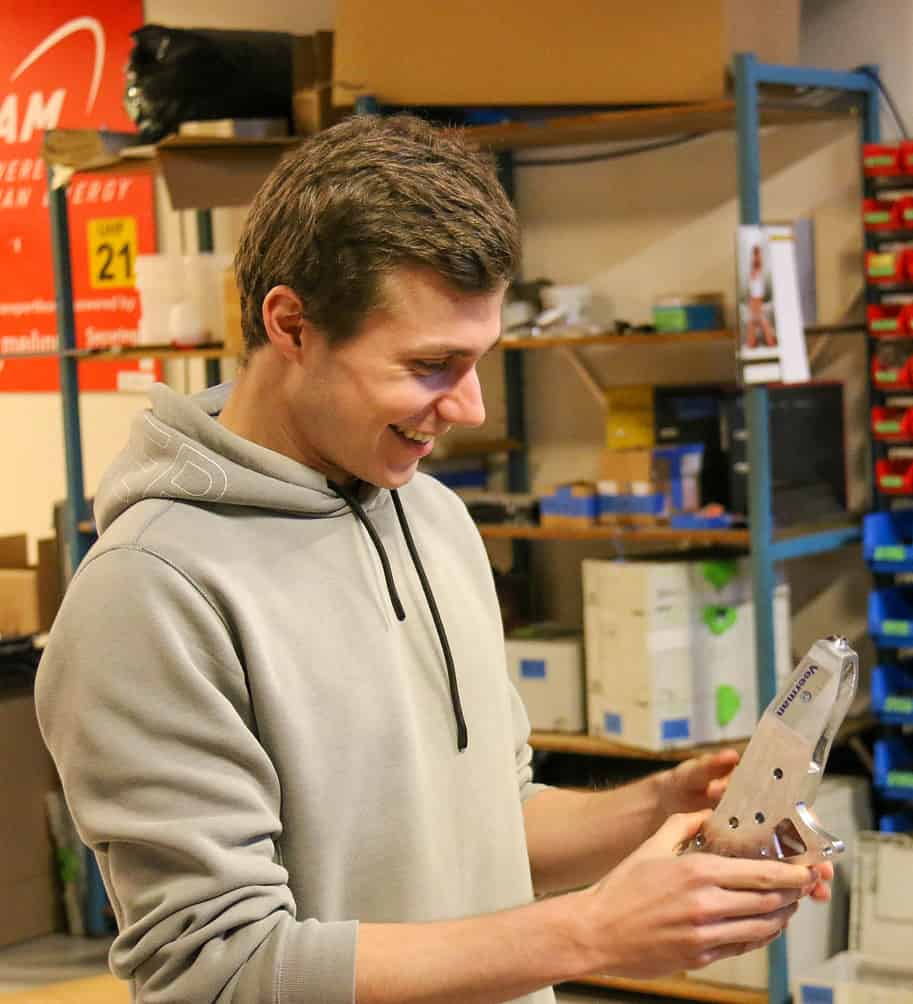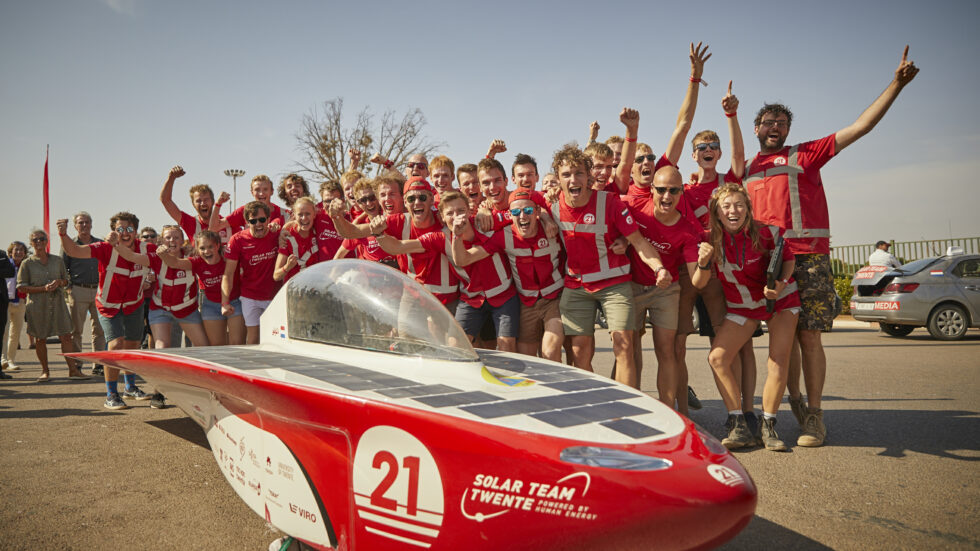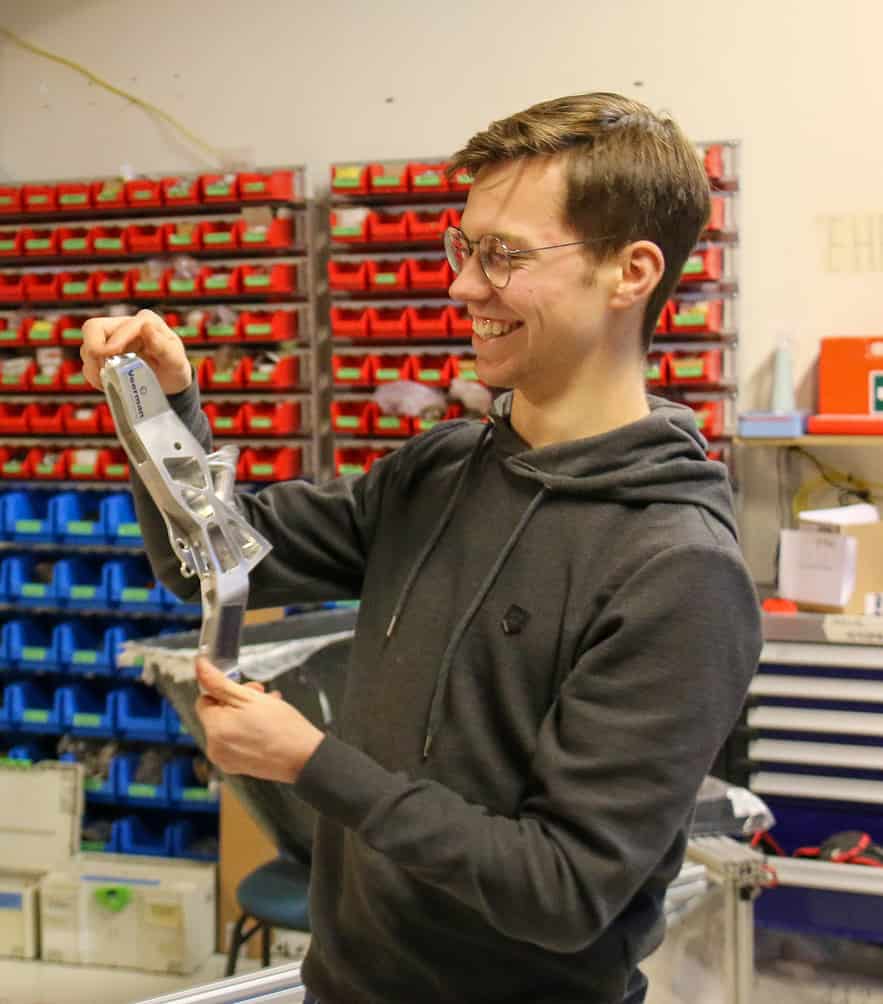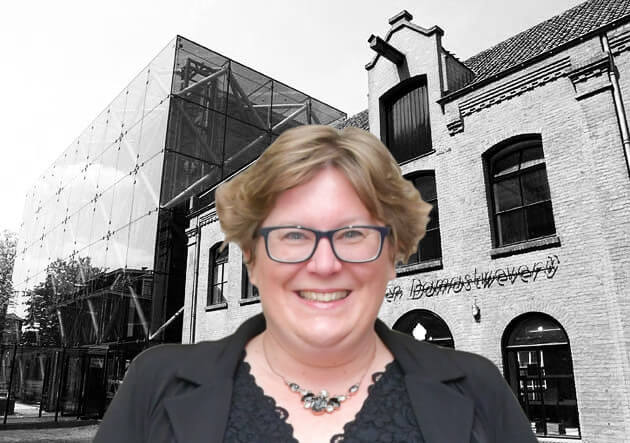
Innovation is not just about technology. Steve Jobs once said, “It’s in Apple’s DNA that technology alone is not enough. That it’s technology married with liberal arts, married with the humanities, that yields us the results that make our heart sing.” Innovative breakthroughs occur precisely at the intersection of disciplines: “This is where the magic happens. At the same time, interdisciplinary collaboration often sounds nicer than it is. After all, each discipline speaks its own language and has its own important values. How do you ensure that there is no fuss but magic at the intersection of disciplines? To find an answer to that question, we follow Solar Team Twente from the initial development phase to the finish line at the Bridgestone World Solar Challenge in Adelaide. Each time a different discipline within the team takes center stage, with this time the passion of the mechanical engineers.
Being allowed to work with extremely motivated people who are pursuing the same goal is truly unique
Niels Buiskool
Niels Buiskool, a mechanical engineering student at the University of Twente, and Sven Termaat, a mechanical engineering student at Saxion University of Applied Sciences, together form the Mechanical Engineering Team. Niels focuses mainly on the wheel suspension, and Sven on the steering and braking system. Participating in the Solar Team is like a childhood dream for them. Niels: “I have been following the Solar Team since high school. In my opinion, this is the coolest student team”. Fortunately, it also turns out to be “cool” in practice. When asked what is so “cool,” both boys do not mention a mechanical element or the race itself but rather emphasize the team spirit. Sven: “Being allowed to work together with extremely motivated people who are pursuing the same goal is truly unique.”

Standing on the shoulders of giants
Going from textbooks to building a solar-powered race car is obviously a big step. At the same time, this is not the first time this has happened: a new student team starts every two years. The alumni of previous editions nurture the new generation. For example, the mechanical engineers have a coaching evening every Monday evening, whereas many alumni of previous editions as possible join and help them along the way. Niels: “This way, you learn a lot quickly. Sometimes it makes your dream poorer. The alumni often respond to our ideas with opposing views of what is impossible.” The mechanical engineers take these reactions very seriously: “many former team members now work in the industry, so they know very well what they are talking about.”
All reports from previous editions are kept. Each team concludes with a technical report containing tips and ideas for the new generation. In this way, knowledge accumulates, and good ideas or insights are not lost. At the same time, this also brings with it an obligation: the mechanical engineers must also document all their choices so that future team members can build on them.

The road to Adelaide

The road to Adelaide is long. The 3,000-kilometer race through Australia’s outback will not take place until October 2023. For the two mechanical engineers, within that entire trajectory, from new team to race, this very month is the most exciting. For the past six months, their work has mainly taken place behind the drawing board (or better: the laptop), but now the transition from design to production and testing is taking place. Both men are unanimous about this: “That moment when you actually have a part in your hands you have been working on for so long is the most beautiful thing there is. At the same time, this phase also means quite a lesson in patience. To produce the parts, Solar Team Twente is dependent on many sponsors, companies that produce these parts for them “for nothing,” and that means delays here and there in the production. This adds to the tension for the mechanical guys. They make grateful use of the resolving skills of the marketing and communications team, who maintain contact with companies. Sven: “Our account manager has a very fluent chat and gets everything done so that we can focus more on the technical side. That’s really nice.”
Testing the mock-up serves to identify and resolve errors at an early stage. Can the parts cope? How fast does the car brake and how smoothly does it steer through corners? What will be needed in terms of maintenance? All questions the mechanical engineers hope to find out in this test phase. Even after the test phase, the tinkering will continue. Niels: “The race is more than 3,000 kilometers; therefore, something that seems a small difference now will make a huge difference later.”
You don’t have to understand everything about each other, but just enough.
Niels Buiskool
Interdisciplinary: hassle or magic?
As much as they enjoy tinkering, both mechanical engineers particularly enjoy working with students from different disciplines. Niels has an important credo: “You don’t have to understand everything about each other, but just enough.” The mechanical engineers give the example of electricity, which they both have no knowledge of. Sven: “I don’t know the terms they use at all.” The gentlemen cleverly solve this lack of knowledge. Together with the electrical engineers, they visualize a box in which all the electricity must go and determine the size of that imaginary box. Only how big that imaginary box should be is relevant to the mechanical engineers, not what is in it. That is exactly what Niels means by “you don’t have to understand everything about each other, but just enough.”
Conflicting interests
Of course, there are also conflicting interests. A good example is track width or the distance between the wheels. For stability, it is good if the distance between the wheels is large; for aerodynamics, on the other hand, it is better if the distance is small. The team solves these conflicting interests by examining the context in which the solar race car must operate. Because the race in Adelaide mainly means one straight road ahead, aerodynamics takes precedence over stability within this context. The message is clear: as long as the goal is clear, interdisciplinary contradictions are apparently no problem at all.
Next time in ‘Innovative magic Solar Team Twente’: the structural engineers

